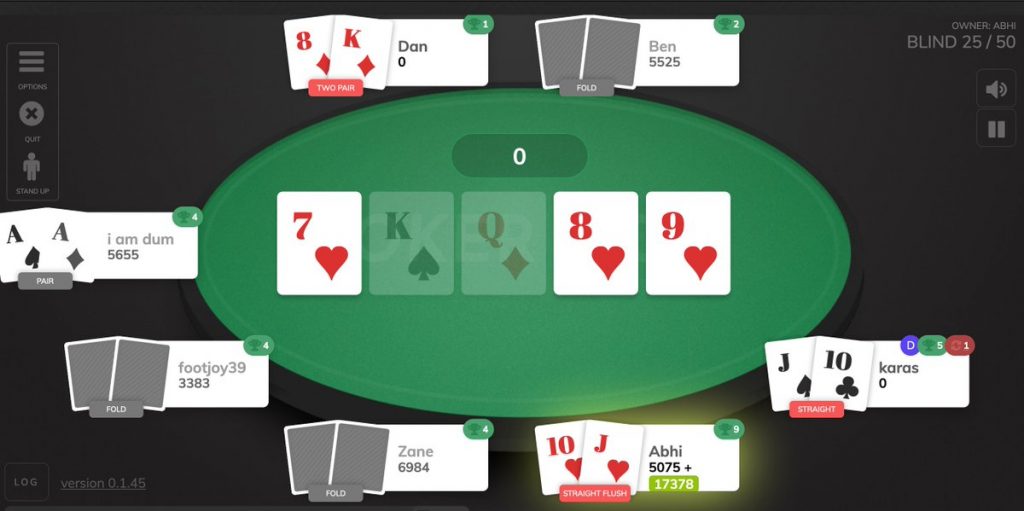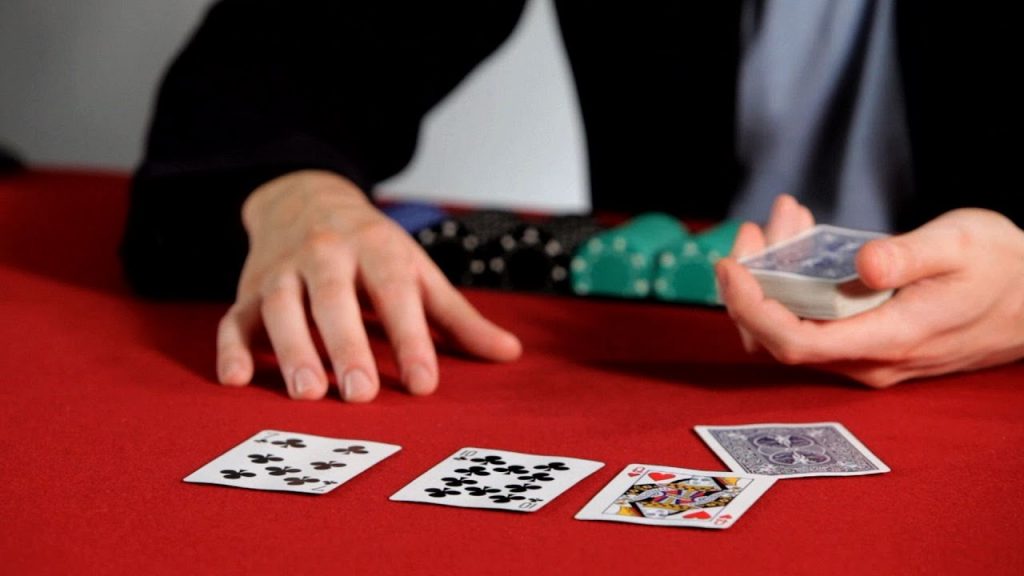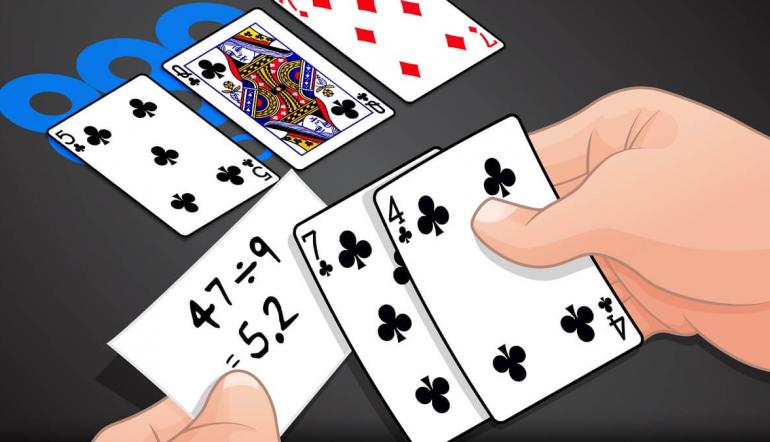Odds is a term used by poker players to define the mathematical expectation of a move in a game. Chances are usually indicated in the form of the ratio of the expected number of wins (completed events) to the number of losses (not committed events), for example, 1:4, we will use this format below (it is possible to write 1/4). Sometimes the inverse proportion is also used – odds against improvement, that is, the ratio of losses to wins is 4:1. Chances can be translated into the probability of an event occurring using the formula: number of wins / (number of wins + number of losses). Thus, the odds of 1:4 correspond to the probability of 1/(1+4)=1/5.
To determine the chances of improvement, the player usually counts the number of ends (they are outs from the English outs) – cards that will improve the hand to a winning one. For example, the player has K♥ 8♥, and on the table A♥ J♥ 4♣ 7♣. It is easy to see that the only way to win in such a situation is to hit the hearts on the river (we assume that one of the opponents has an ace). We see six cards out of 52 in the deck, and we see four hearts out of 13. That is, in the deck, the remaining 52-6=46 cards account for 13-4=9 hearts. Thus the player has 9 ends, and the chances of improving are 9:(46-9)=9:37, or about 1:4. The probability of improvement is 9/46=19.6%. There are simple tables that show the odds of improving on hitting one or two cards (i.e. for the turn and river) for every possible number of ends.

At each stage of the game, when choosing the optimal action, the player evaluates the chances. The action decision is often made based on a comparison between a player’s chances of improving and the pot odds, most often when deciding whether to call an opponent’s bet with a hand that needs improvement. Pot odds – the ratio of the bet to the current pot. Let’s continue the previous example: if there was $40 in the pot by the turn, and the opponent bets $10 in front of you, then the total value of the pot is $50, and you need to bet $10, that is, pot odds are 10:50=1:5. If the pot odds are less than the chances of improvement, then it is better to call the bet (in our case, the odds of improving 1:4 are greater than the odds of the pot 1:5 – call), if the chances of improving are less, it is worth folding. This rule can be easily checked mathematically: we bet $10, in four cases we will lose this $10, which will give us -$40, but once we will hit the flush and win, which will give us +$50. On average, over five games, we will win $10 – that is, the call is profitable for us (in the case of a fold, our result is zero, that is, it is less profitable).
In our example, we assumed that any heart would give us a high flush and we would win the hand, since our opponent only had a pair of aces. But let’s imagine another situation – the opponent has an ace set. The flush still hits a set, but imagine a situation where the river is a four or seven of hearts. We have a flush, but our opponent has a full house and still wins. If you think that there are some cards that will help you improve, but at the same time they will improve your opponent and not allow you to win, then you should not count such cards as your ends (such ends are called dummy ends). In this case, we do not count four and seven hearts as ends, and our number of ends is reduced to seven. The process of reducing the ends, which help not only us, but also opponents, is called discounting.

In practice, we cannot know exactly the opponent’s current cards, so we make an assumption about his hand with some probability. For example, if we consider our opponent to have a 50% chance of a set, in this case we discount our original 9 ends to 9-2*0.5% and get 8 ends. Accordingly, the discounted odds are 8:38 or 1:4.75, which is still greater than the pot odds of 1:5, so our decision to call remains unchanged. If you believe that some of your ends are fictitious, then you need to calculate and use the discounted odds of improvement.
Let’s continue with our example. We call a bet on the turn, if nothing comes to us, then we will fold without losing a dollar from above, but if we get a flush, then there is a chance that the enemy will bet on the river, we will raise, he will call, that is, we we will receive two additional bets ($20) from the opponent. Even if the heart scares him, he won’t bet, but will most likely call our bet, which will still give us an extra $10. If we consider that the probability of each of the options is 50%, then we get the odds of the pot 10: (50 + 20 * 0.5 + 10 * 0.5) = 1: 6.5. Another case is if there is another player behind us who will walk after us on the turn: there is a chance that he will raise the bet, in this case the pot odds will be $20:($40+$20+$20)=1:4 (assuming that the first player will call the raise; however, here we have not taken into account river bets yet).
Given the volume of additional bets that can be made in the current and subsequent rounds, we can calculate implied pot odds. Accordingly, it will be correct to compare the discounted odds with the implied odds of the bank.

In making a decision in the general case, the following procedure can be recommended:
This sequence looks complicated, but, fortunately, in most cases the decisions are quite obvious, and as players grow in experience, even in difficult situations, players can make fairly accurate decisions.